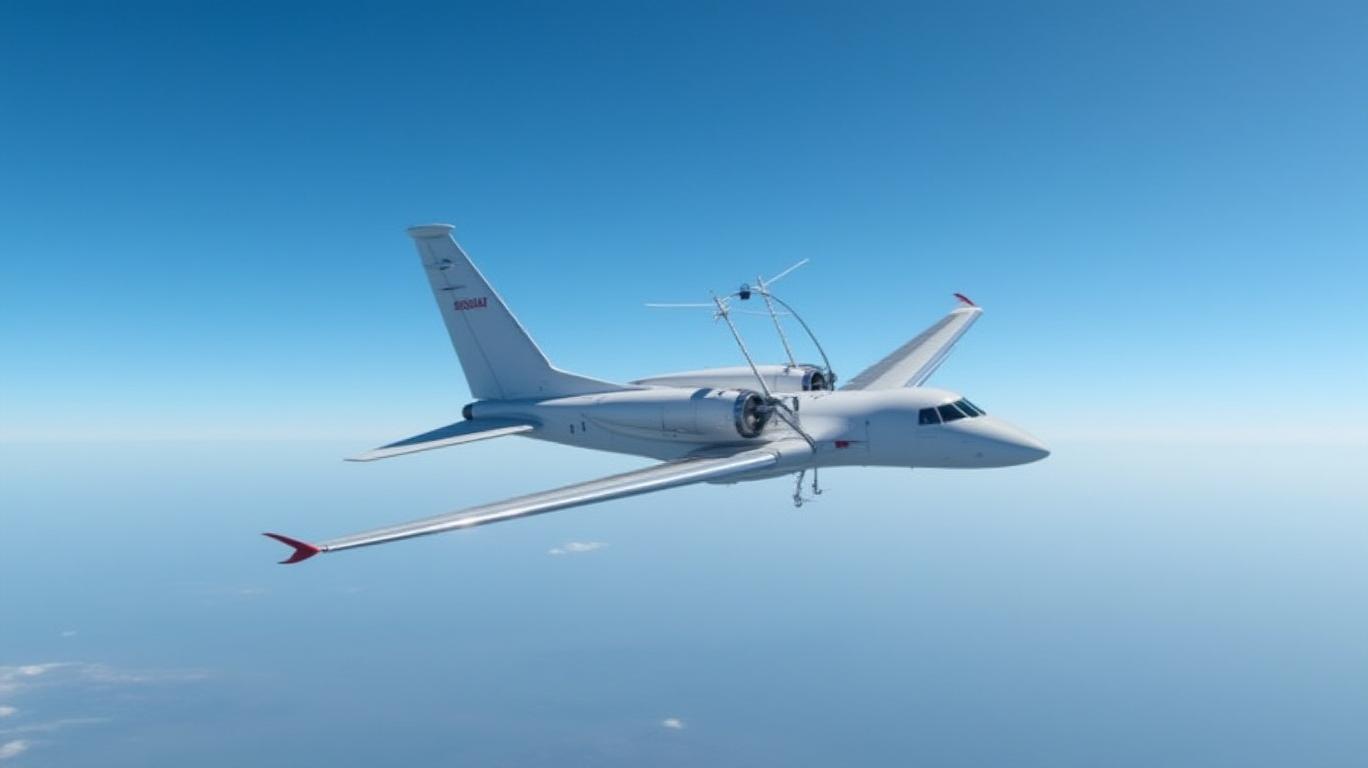Gilat Satellite Networks (GILT): Navigating Integration Hurdles to Capture Defense & IFC Growth
Gilat Satellite Networks (NASDAQ: GILT) is at a pivotal juncture. While its Q1 2025 results showed a GAAP net loss of $6.0 million, this masks a deeper story of strategic execution and secular tailwinds in mission-critical satellite communications. Investors should look past the temporary integration drag of its $3.6 million Stellar Blu ramp-up costs and focus on Gilat’s non-GAAP resilience, robust defense backlog, and the scalability of its Sidewinder ESA antenna. Here’s why this satellite comms leader presents a compelling investment opportunity.
Financial Dissection: GAAP Headwinds vs. Non-GAAP Strength
Gilat’s Q1 GAAP results were overshadowed by $3.6 million in one-time costs tied to integrating its newly acquired Gilat Stellar Blu division. Excluding this drag, Adjusted EBITDA rose to $11.2 million, reflecting a 20% year-over-year increase in underlying profitability. This underscores management’s ability to execute on its acquisition strategy while navigating operational complexities.
The company’s 2025 guidance remains ambitious:
- Revenue: $415–$455 million (+42% midpoint growth vs. 2024).
- Adjusted EBITDA: $47–$53 million (+18% midpoint growth).
With 80% of 2025 revenue already contracted, the path to these targets is clear. The key inflection point? Stellar Blu’s ramp-up is nearing completion, and by late 2025, management expects the division to achieve a 10% Adjusted EBITDA margin run rate. This would normalize GAAP results and unlock valuation upside.
Defense Secular Trends: Geopolitical Demand & Backlog Powerhouse
Gilat’s Defense segment is a growth engine, reporting 34% YoY revenue growth to $23 million in Q1. This expansion is fueled by geopolitical tensions driving demand for secure, mission-critical communications. Notable wins include:
- A $23 million multi-year U.S. DoD contract for transportable satellite terminals.
- A $6 million Asia-Pacific defense deal for military-grade solutions.
- Over $4 million in orders for portable terminals from global defense clients.
The total defense backlog now exceeds $64 million, with geopolitical tailwinds ensuring sustained demand. Gilat’s new product launches—such as the GLT modem and Aquarius Pro DS modem—are further widening its moat in markets like LEO/MEO/GEO constellation integration.
IFC Scalability: Sidewinder ESA’s 150+ Aircraft Penetration
The Sidewinder electronically steered antenna (ESA), developed by Stellar Blu, is Gilat’s crown jewel in the In-Flight Connectivity (IFC) space. With installations on over 150 aircraft, it has already proven its operational reliability across 70,000+ flight hours.

Crucially, Sidewinder’s value proposition extends beyond commercial aviation. Gilat is now expanding its applications into:
- Intelligence, Surveillance, and Reconnaissance (ISR) systems.
- VIP aviation for high-end corporate and government aircraft.
- LEO satellite compatibility, positioning it for growth as low-Earth orbit constellations expand.
The Boeing OEM qualification, expected within 2–3 quarters, will be a transformative milestone. Once achieved, Sidewinder can be installed as a line-fit option on new aircraft, shifting revenue from retrofit (currently 100% of IFC revenue) to a more scalable, recurring revenue model.
Investment Thesis: A Structural Growth Leader at a Strategic Entry Point
Gilat’s current valuation—post its Q1 earnings dip—provides an attractive entry point for investors. Key catalysts include:
1. Integration Cost Normalization: Stellar Blu’s margins are set to improve in H2 2025, aligning GAAP results with non-GAAP resilience.
2. Defense Backlog Execution: With $64 million in contracted orders, Gilat is positioned to capitalize on rising global defense spending.
3. Sidewinder’s OEM Milestone: Boeing qualification will unlock a $100+ million annual market for line-fit installations.
Risk-Reward Analysis:
- Upside: If Gilat achieves its 2025 targets, revenue could hit $455 million (+42% YoY) and EBITDA $53 million (+18%), with Sidewinder contributing $120–$150 million.
- Downside: Short-term supply chain delays or geopolitical shocks, though Gilat’s diversified backlog and $64 million cash cushion mitigate these risks.
Conclusion: A Satellite Play for the Next Decade
Gilat is navigating integration hurdles with discipline, and its defense/IFC growth engines are primed for long-term dominance. At current prices, the stock offers 2025E revenue/EBITDA CAGRs of 42%/18%, making it a rare pure-play on two secular trends: geopolitical defense spending and next-gen satellite connectivity.
Investors should prioritize Gilat as a core holding in their tech/satellite portfolios. The path to profitability is clear—once integration costs subside, Gilat’s valuation will reflect its true potential. Act now to secure entry into a structurally growing leader.
The views expressed here are for informational purposes only and should not be taken as investment advice.

Comments
No comments yet